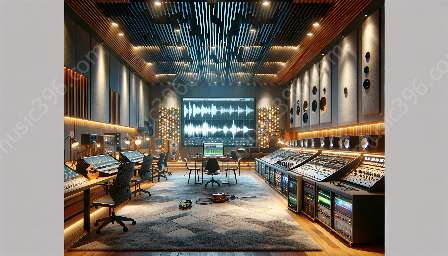Dynamic range compression is an essential tool in music production, used to control the dynamic range of audio signals, resulting in a more consistent and polished sound. In essence, dynamic range compression involves reducing the volume of the loudest parts of a musical recording while boosting the volume of the quietest parts, leading to a more balanced and consistent overall sound.
Understanding the concept of dynamic range compression is crucial for anyone involved in music production, as it plays a significant role in shaping the final quality of a recording. When used effectively, dynamic range compression can enhance the impact and clarity of music.
Basics of Music Production
When it comes to the basics of music production, dynamic range compression is a fundamental aspect that aspiring producers and engineers should grasp. By gaining a clear understanding of dynamic range compression, individuals can take their skills to the next level and produce high-quality, professional-sounding music.
What is Dynamic Range Compression?
Dynamic range compression involves manipulating the dynamic range of audio signals. The dynamic range of a sound refers to the difference between the loudest and quietest parts of the audio signal. By adjusting the dynamic range using compression, producers can achieve a more consistent sound with controlled peaks and sustained levels, resulting in a more polished and professional sound.
Usage in Music Production
Dynamic range compression is used in music production to shape the sonic characteristics of audio signals. It is employed to control the dynamics of individual tracks, as well as the overall mix, to achieve a more coherent and impactful sound. Compression can be used on a variety of audio sources, including vocals, guitars, drums, and more, to shape their tonal characteristics and ensure that they sit well within the mix.
Functions of Dynamic Range Compression
- Control Dynamics: Compression allows producers to tame excessively loud peaks and boost quieter passages, making the overall sound more consistent and balanced.
- Increase Sustain: By applying compression, producers can increase the sustain of individual notes and sounds, enhancing their presence and impact in the mix.
- Add Punch and Impact: Compression can be used to emphasize the attack phase of sounds, creating a punchier and more impactful sound.
- Glue Mix Elements: When applied to the entire mix, compression helps glue together different elements, creating a cohesive and integrated sound.
Music Recording
Dynamic range compression also plays a vital role in music recording. When capturing audio, engineers may utilize compression at various stages to shape the dynamics of individual instruments or vocals, ensuring that the recorded tracks have a consistent and pleasing dynamic range. This can enhance the overall quality of the recorded material and provide a solid foundation for the subsequent stages of the production process.
Conclusion
Dynamic range compression is an indispensable tool in music production and recording, empowering producers and engineers to shape the dynamics and overall sound of musical recordings. Understanding its concepts and applications is essential for anyone seeking to excel in the field of music production. By mastering the use of dynamic range compression, individuals can elevate the quality and impact of their music productions, creating professional-grade recordings with greater clarity and consistency.



































